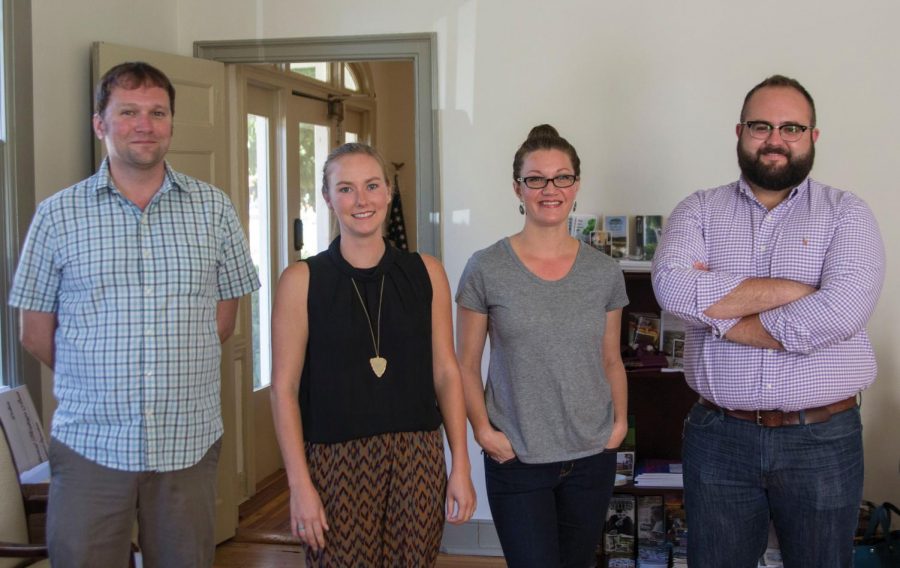Students work for local history projects
October 21, 2017
Consisting of northwest Alabama’s six Tennessee River basin counties, the Muscle Shoals National Heritage Area deals with plenty of history.
To help accomplish its various historical projects, the organization offers positions for UNA students to volunteer or work in.
“Along the way, students have learned to become professionals, to work as team players and to build relationships with their communities,” said Carolyn Barske, interim director and assistant professor of history, in an August newsletter.
Graduate student worker Brian Murphy said students should contact the heritage area to gain experience in several fields.
“(Working for the heritage area) is a really good way of learning local history, working on history projects (and getting) to know people in the community and make contact with other people who are doing history (work) in the area,” he said.
Murphy, who has been with the Heritage Area since the summer of 2016, is involved in the Florence African-American Heritage Project.
Graduate student assistant Stephanie Vickers said while she earned a MBA in theatre, she later began working as a historical interpreter and decided to obtain a master’s degree in public history.
Vickers came to the heritage area in 2014 after being introduced to Barske.
“I really feel like this graduate program is exactly representing what we’ll be doing for work,” she said.
Vickers is currently working on a new script for Florence trolley tours, covering topics from historical places to notable people in the area, that tour guides can learn easily.
She will get to implement the script on a tour before it is edited for time.
Vickers said students’ work leaves something behind for the community to use.
“There is a lot of opportunity for different interests for the historian, but the community outreach is the most important thing,” she said. “What we leave behind from our work is research, projects (and) visibility for the community.”
Graduate student Seth Armstrong said his consultant job, which he has done since last summer, consists of helping project managers find relevant records in archives and making sure the projects accurately represent the information.
He is currently involved with two projects, one being a fourth-grade educator’s packet and accompanying presentation for Belle Mont Mansion.
“It will allow school groups to get hands-on information before they are on the site,” he said.
The other is developing brochures for a walking tour of old sites in Decatur, which will mostly deal with the Trail of Tears.
The National Park Service is working with the area on the project.
Armstrong said students interested in working for the heritage area should be self-starters.
“You are forced to get up, complete your deadlines (and) complete your projects,” he said. “At the end of the day, you are doing the ground work.”
To contact the heritage area, visit msnha.una.edu or email [email protected].












